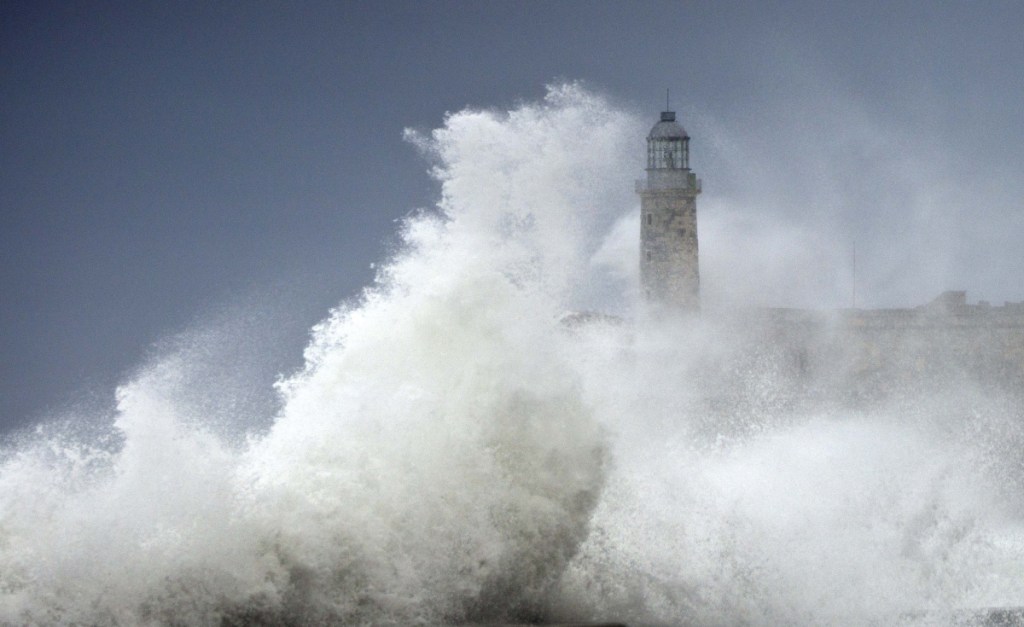WASHINGTON — Harvey, Irma, Maria. These three monster hurricanes, all of which struck U.S. shores at Category 4, likely attained such strength from Atlantic ocean waters which were abnormally warm, says a new study published in the journal Science on Thursday.
And, in future decades, as the ocean warms even more from rising greenhouse gas concentrations from human activity, the study projects “even higher numbers of major hurricanes.”
Considering the toll of the 2017 hurricane season, which unleashed 10 hurricanes in 10 weeks, and three of the five costliest hurricanes on record in Harvey, Irma, and Maria, it is difficult to imagine the implications of similar circumstances repeating with even greater frequency.
The authors, led by Hiroyuki Murakami of NOAA’s Geophysical Fluid Dynamics Laboratory, conducted high-resolution modeling experiments to draw this ominous conclusion.
Active Atlantic hurricane seasons, like 2017, are often linked to the presence of La Niña events in the Pacific Ocean. They’re cyclical, coming around every few years, and are generally hospitable for hurricanes. El Nino events, their opposite, introduce hostile winds which tend to suppress hurricane development.
But, based on the results of their modeling experiments, study researchers ruled out La Nina was the main driver of the 2017 hurricane onslaught. The warm Atlantic ocean, instead, was the more important player.
“(W)e show the increase in the 2017 major hurricanes was not primarily caused by La Niña conditions in the Pacific Ocean, but mainly by pronounced warm sea surface conditions in the tropical North Atlantic,” the study said. Major hurricanes are those rated at least Category 3.
The 2017 storms were able to gain so much strength not just because the Atlantic ocean temperatures were warm but also because they were substantially warmer, compared to normal, than the rest of the global ocean, the study said.
In an interview, Murakami explained that when the Atlantic is much warmer than other oceans, the atmosphere becomes more unstable and major hurricane activity tends to flourish. But when ocean temperatures are warmer than normal everywhere, major hurricanes in the Atlantic become less likely. Researchers first documented this relationship in a 2007 study.
The study’s modeling results show that in future decades the Atlantic will frequently be warmer (relative to normal) than other oceans. “We find the Atlantic gets much warmer than other open ocean,” Murakami said. This, he said, will increase the risk of major hurricanes in the Caribbean, near the U.S. East Coast and over the open Atlantic waters.
Murakami linked the abnormally warm ocean temperatures in 2017 in the Atlantic to both climate warming from human activities and natural variability. In the future, he said he expects human-induced climate change to play a more dominant role.
Brian McNoldy, a hurricane researcher at the University of Miami who was not involved in the research, praised the study methodology. But he was unconvinced that the major Atlantic hurricane activity in 2017 could be conclusively connected to human activity. “It is true that a warmer ocean can support stronger hurricanes, but I think we need to avoid linking climate change to specific storms, seasons, and basins.”
Ryan Maue, meteorologist at weathermodels.com, was particularly enthused by the sophistication of model used by the researchers. “The success of the HiFLOR model at high resolution as a key tool in unraveling both current and future climate-hurricane links is quite exciting,” he said. “GFDL (Global Fluid Dynamics Laboratory) is leading the way on helping pin down many of the remaining uncertainties in hurricane research.”
Copy the Story LinkSend questions/comments to the editors.



Success. Please wait for the page to reload. If the page does not reload within 5 seconds, please refresh the page.
Enter your email and password to access comments.
Hi, to comment on stories you must . This profile is in addition to your subscription and website login.
Already have a commenting profile? .
Invalid username/password.
Please check your email to confirm and complete your registration.
Only subscribers are eligible to post comments. Please subscribe or login first for digital access. Here’s why.
Use the form below to reset your password. When you've submitted your account email, we will send an email with a reset code.